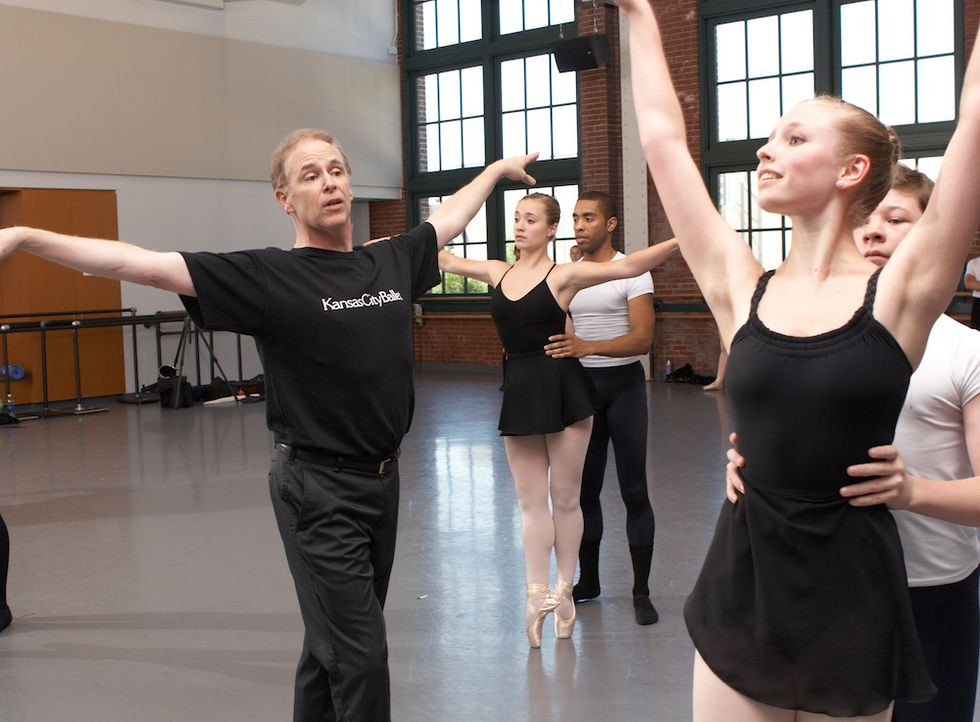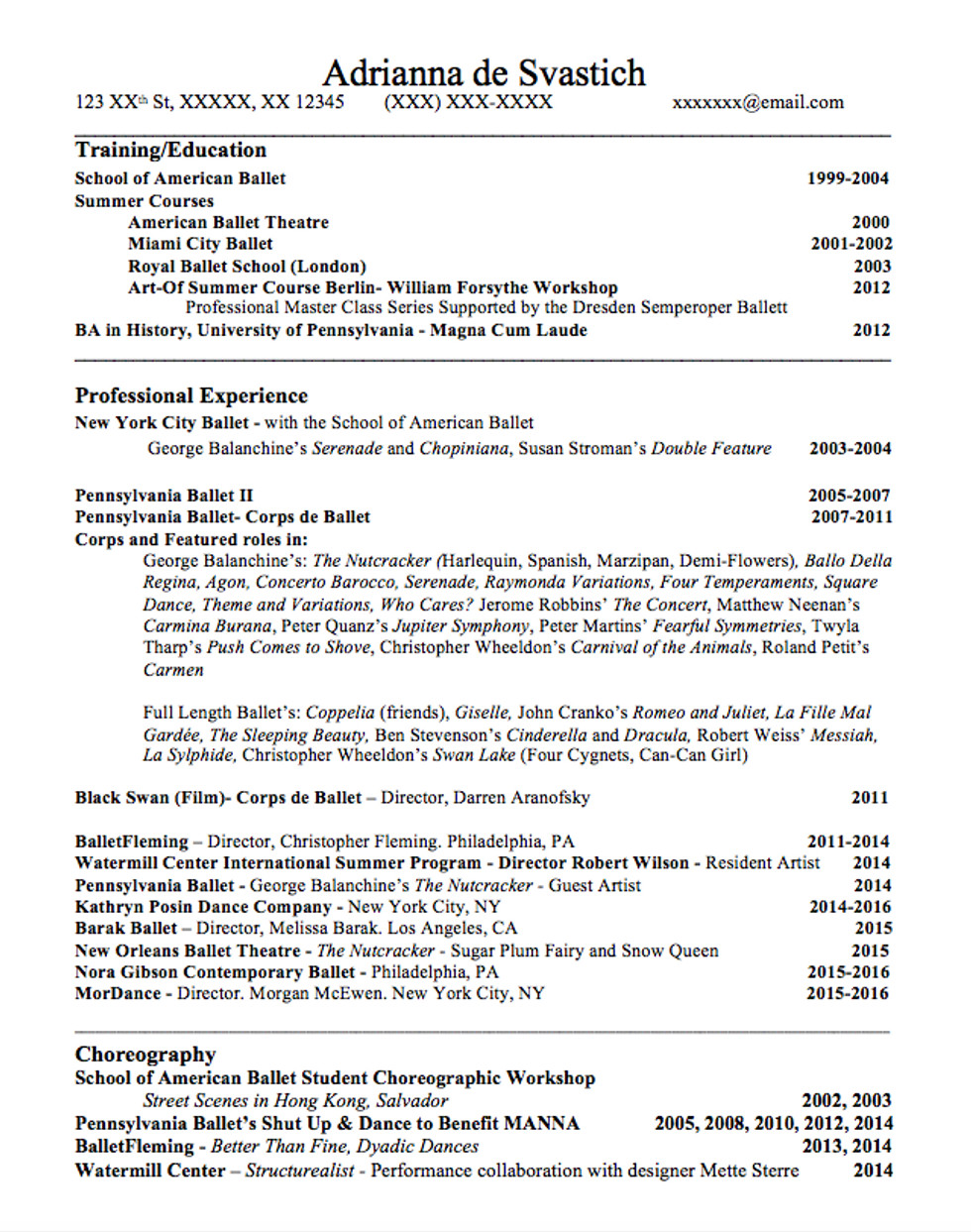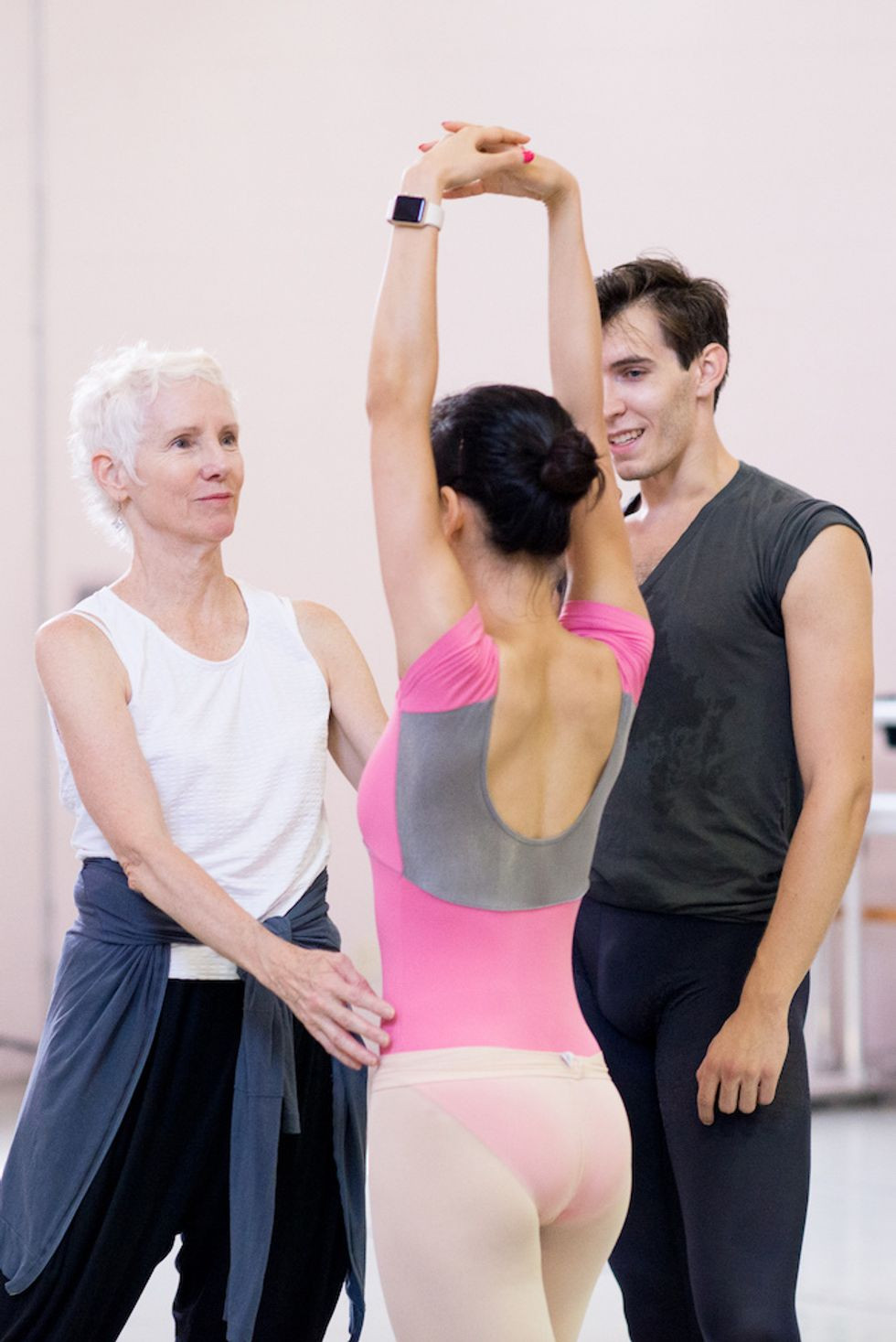For dancers, your resume is more than just a list of experiences; it’s your first audition. Artistic directors often sift through hundreds of applications, and your Dance Resume is your initial opportunity to capture their attention and make a positive first impression. However, seemingly minor details can inadvertently detract from your application. To ensure your resume stands out for all the right reasons, let’s delve into how to create a compelling dance resume that gets you noticed.
Essential Elements of a Winning Dance Resume
When artistic directors review dance resumes, they are looking for key information quickly. They need to see your essential qualifications at a glance, including where you received your training and the companies and choreographers you have collaborated with. Victoria Morgan, the artistic director of Cincinnati Ballet, emphasizes the importance of recognizable names. “Knowing if a dancer has worked with respected figures in the industry or attended a well-regarded school immediately catches my eye,” she explains. “It also gives me potential references to contact.”
Keep your dance resume concise and to the point – ideally, no longer than one page. Devon Carney, artistic director of Kansas City Ballet, stresses the importance of brevity when reviewing a large volume of applications. “When I have hundreds of resumes to go through, a lengthy, multi-page resume is a disadvantage. Time is of the essence, and I need to quickly grasp your key qualifications,” Carney states.
 Artistic director Devon Carney reviewing dance resumes, emphasizing the need for concise information.
Artistic director Devon Carney reviewing dance resumes, emphasizing the need for concise information.
Regarding formatting, your contact information should be prominently displayed at the top of the page. Ensure accuracy and currency: include your full name, current address, phone number, and a professional email address that you check regularly. Carney highlights instances where dancers have missed opportunities due to delayed responses to emails. Including your height is also helpful, but details like weight, hair, and eye color are generally unnecessary. If you are under 18 or appear to be, including your date of birth is advisable due to child labor laws that vary by location.
Next, detail your work and training history. The standard format is to present information in reverse chronological order, starting with your most recent positions. Use separate headings for “Training” and “Professional Performing Experience.” Listing each school, company, or choreographer on a new line, utilizing indentations or bullet points, enhances readability. Repertoire and roles can be listed alongside the respective school or company or in a separate “Repertoire” section. Morgan also suggests including links to online videos of standout performances or studio work if available. Conclude with related experience such as TV, commercial, modeling, or theatrical work, academic degrees, continuing education, and any dance-related awards.
Adrianna de Svastich, a corps member at Pennsylvania Ballet, prefers to place her training section at the beginning of her resume. “I want to showcase my foundational training and progression as a dancer upfront. Ultimately, it’s about emphasizing what you believe best represents you and your dance journey,” de Svastich notes.
 Dancer Adrianna de Svastich's one-page dance resume, highlighting effective organization and conciseness.
Dancer Adrianna de Svastich's one-page dance resume, highlighting effective organization and conciseness.
What to Omit from Your Dance Resume
A strong dance resume isn’t about listing every single dance-related activity you’ve ever participated in. It’s about strategic prioritization. Whether you’re a seasoned professional or a student with limited performance experience, focus on what truly matters to an artistic director.
Carney emphasizes the significance of lineage. “When evaluating a dancer’s background, I look at who has shaped their training,” he explains. This means listing the primary schools and teachers who have significantly influenced your dance technique, but not every single studio you’ve attended, especially those from early childhood, like tap classes at age three. Students and early-career dancers should include notable summer programs, but detailing every faculty member or scholarship received is unnecessary.
Listing roles and repertoire requires careful consideration. Experienced dancers sometimes make the mistake of over-listing to demonstrate their extensive experience, but an excessively long list becomes cumbersome. “I don’t need to know you performed ‘Waltz of the Flowers’ for numerous consecutive years,” Carney remarks. “When I see featured roles listed, I assume you have experience in corps de ballet work as well. The aim is to provide a clear snapshot of your current standing and most significant roles.” If you’ve primarily danced in corps roles, include them, but selectively highlight the most prominent or noteworthy ballets.
 Artistic director Victoria Morgan emphasizing the importance of focused information on a dance resume, avoiding distractions.
Artistic director Victoria Morgan emphasizing the importance of focused information on a dance resume, avoiding distractions.
As de Svastich’s career progressed, she refined her repertoire list to include only principal and soloist roles, and added freelance projects, film, commercial work, and her college degree. She also incorporates her choreography experience at the end of her resume.
Including “extras” can be beneficial if they genuinely reflect your identity as a dancer or individual. Morgan values a college degree as an indicator of maturity and independence, while Carney appreciates knowing if a dancer engages in volunteer or community work. However, avoid overdoing it. “Too much supplementary information can actually distract from the key aspects of your training and performance experience that are most crucial,” Morgan cautions.
Condensing your passion and career highlights onto a single page can be challenging, but crafting a concise and targeted dance resume will leave artistic directors with a strong, positive, and professional impression of your qualifications and accomplishments.
Bonus Tips: Dance Resume Do’s and Don’ts
Do:
- Proofread meticulously (at least twice!). Typos signal a lack of attention to detail. “It’s frustrating to see misspelled names of renowned choreographers or teachers,” Carney points out. (Common misspellings include “Bournonville” and “Kylián.”)
- Include continuing education. De Svastich includes a William Forsythe workshop she attended as a professional dancer to demonstrate her commitment to ongoing artistic development.
- Consider adding professional photos. A small headshot and a dance shot in the upper corner can make your resume visually memorable and help directors quickly recall you.
Don’t:
- Mention hobbies or expressions of gratitude. “Resumes overloaded with excessive information lose my interest,” Morgan states.
- Leave unexplained gaps or inconsistencies in your chronology. Directors might question unexplained periods without training or work, or concurrent attendance at multiple schools.
- Fear white space. If your essential information doesn’t fill an entire page, resist the urge to add irrelevant details just to fill space.
- Include personal Instagram or Twitter handles. Unless you maintain a strictly professional dance-related social media presence, it’s best to omit personal accounts.

